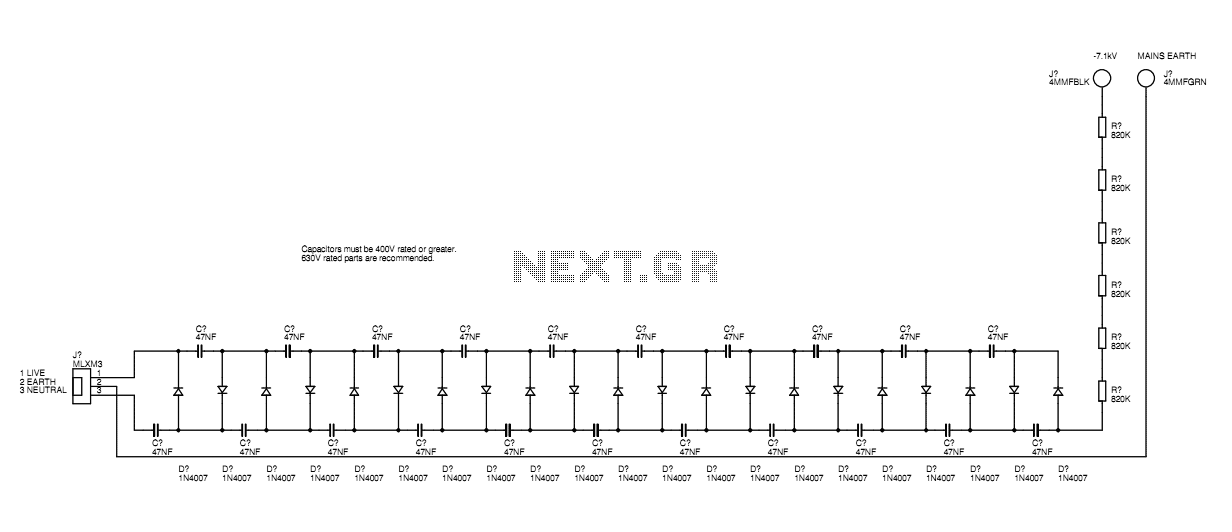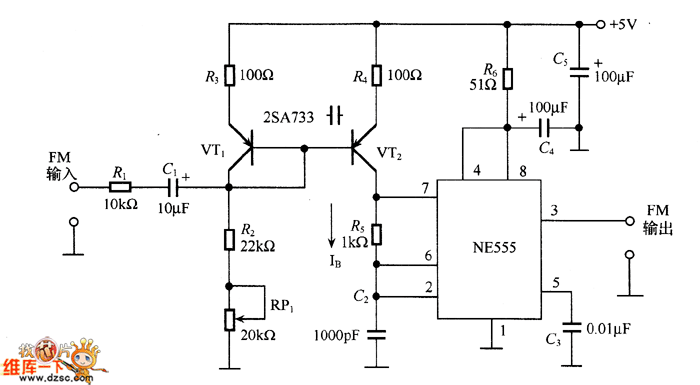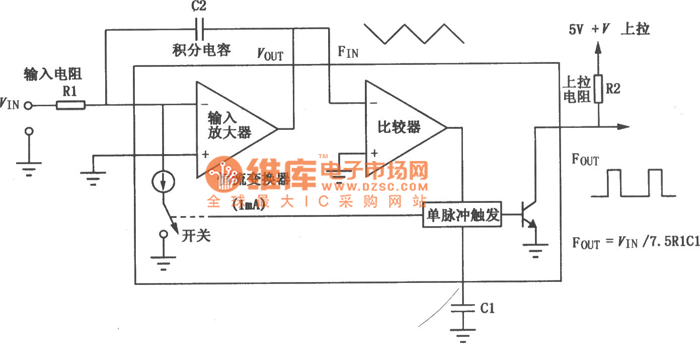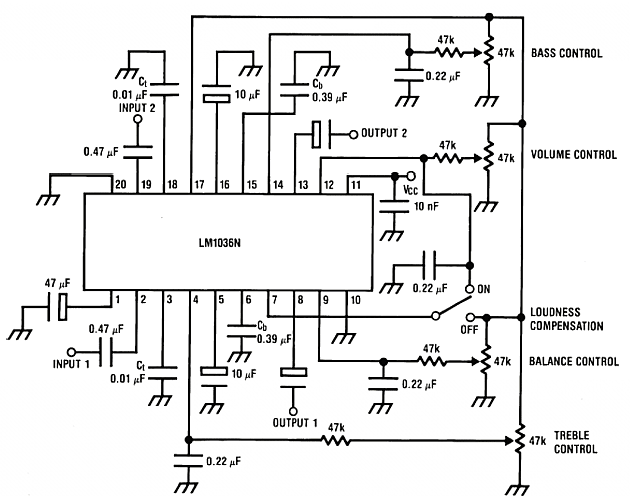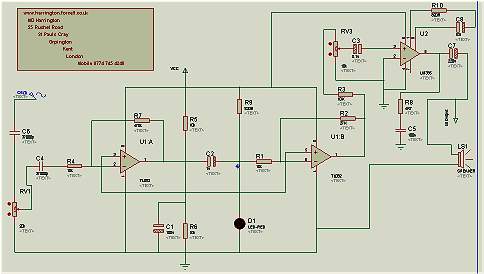
555 Audio guide blind electronic circuit diagram
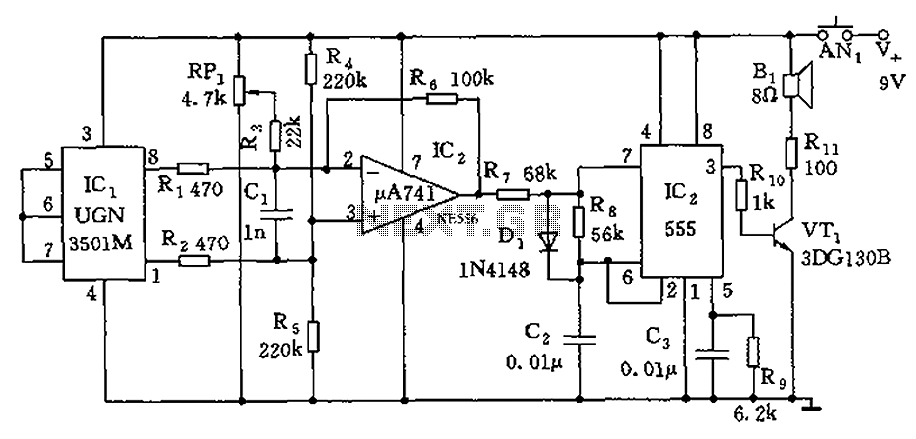
The circuit consists of a 555 timer and associated components designed for voltage-to-frequency conversion. It is utilized for determining the orientation of Earth's magnetic field using a Hall-effect sensor, specifically the UGN-3501M. This sensor incorporates a Hall element and a linear differential amplifier, with a sensitivity of approximately 1.4 mV/gauss. The configuration enhances the sensitivity of magnetic field measurements by positioning two flat magnets on either side of the sensor to capture Earth's magnetic field lines effectively. The sensor outputs a differential signal (1 feet, 8 feet) to an operational amplifier (uA741), where the inverting terminal (pin 2) and the non-inverting terminal (pin 3) are connected for further amplification before interfacing with the 555 timer. The output voltage from the 555 timer is influenced by the strength of the magnetic field detected by the Hall sensor. The output frequency of the pulse generated by the 555 timer is contingent upon the charge voltage of capacitor C2, allowing for a lower output frequency to guide the orientation sounder. By adjusting the potentiometer RP1, the pulse frequency of the 555 timer can be set to a specific value (e.g., 1000 Hz) when the magnetic field is neutral. Variations in position due to changes in the magnetic field result in frequency changes, which can be interpreted as variations in pitch to assist in determining walking orientation.
The circuit operates by utilizing the 555 timer in astable mode, where it generates a square wave output based on the charging and discharging cycles of capacitor C2. The frequency of this output is determined by the values of resistors connected to the discharge pin and the capacitor itself. The Hall-effect sensor detects the magnetic field and provides a voltage output proportional to the field strength, which is then amplified by the uA741 operational amplifier. The differential output from the sensor is critical for accurately measuring the magnetic field, as it allows for noise reduction and improved sensitivity.
The configuration of the Hall sensor with the flat magnets ensures that the sensor is aligned optimally to detect the magnetic field lines, thereby enhancing the overall performance of the circuit. The adjustment of potentiometer RP1 plays a vital role in calibrating the circuit, allowing for fine-tuning based on the specific application and environmental conditions. This capability is essential for applications requiring precise orientation detection, such as in navigation systems or robotic guidance. The output from the 555 timer can be used to drive a speaker or other sound-producing device, providing audible feedback on the orientation based on the frequency modulation. This design approach effectively combines analog signal processing with practical applications in orientation detection and navigation. As shown, the 555 and the surrounding elements constitute a voltage - frequency conversion circuit. For determining the orientation of Earths magnetic field is a Hall-effect de vices integrated sensor UGN-3501M, The sensor contains a Hall element and a linear differential amplifier, the sensitivity of the device is about 1.4 mV/gauss, improve measurement Earths magnetic field sensitivity on both sides of the sensor against the two flat magnets to pick up the subject of Earths magnetic field lines more. Differential output of the sensor (1 feet, 8 feet), respectively uA741 consisting of the differential amplifier inverting terminal (pin 2) and a non-inverting terminal (pin 3) is connected to further enlarge and then added to 555.
IC2 magnitude of the output voltage depends on the pickup device Hall magnetic field strength, and the voltage component 555 - the frequency converter output frequency of the pulse height depends on the charge voltage value C2, that is, the output frequency is low the orientation guide sounder which to decide. When adjusted by adjusting potentiometer RP1, so that when the magnetic field is zero, the pulse frequency of 555 to a certain value (eg 1000Hz), when the position changes due to changes in the magnetic field causes the frequency changes, the blind can be varied according to pitch determining the orientation of walking.
The circuit operates by utilizing the 555 timer in astable mode, where it generates a square wave output based on the charging and discharging cycles of capacitor C2. The frequency of this output is determined by the values of resistors connected to the discharge pin and the capacitor itself. The Hall-effect sensor detects the magnetic field and provides a voltage output proportional to the field strength, which is then amplified by the uA741 operational amplifier. The differential output from the sensor is critical for accurately measuring the magnetic field, as it allows for noise reduction and improved sensitivity.
The configuration of the Hall sensor with the flat magnets ensures that the sensor is aligned optimally to detect the magnetic field lines, thereby enhancing the overall performance of the circuit. The adjustment of potentiometer RP1 plays a vital role in calibrating the circuit, allowing for fine-tuning based on the specific application and environmental conditions. This capability is essential for applications requiring precise orientation detection, such as in navigation systems or robotic guidance. The output from the 555 timer can be used to drive a speaker or other sound-producing device, providing audible feedback on the orientation based on the frequency modulation. This design approach effectively combines analog signal processing with practical applications in orientation detection and navigation. As shown, the 555 and the surrounding elements constitute a voltage - frequency conversion circuit. For determining the orientation of Earths magnetic field is a Hall-effect de vices integrated sensor UGN-3501M, The sensor contains a Hall element and a linear differential amplifier, the sensitivity of the device is about 1.4 mV/gauss, improve measurement Earths magnetic field sensitivity on both sides of the sensor against the two flat magnets to pick up the subject of Earths magnetic field lines more. Differential output of the sensor (1 feet, 8 feet), respectively uA741 consisting of the differential amplifier inverting terminal (pin 2) and a non-inverting terminal (pin 3) is connected to further enlarge and then added to 555.
IC2 magnitude of the output voltage depends on the pickup device Hall magnetic field strength, and the voltage component 555 - the frequency converter output frequency of the pulse height depends on the charge voltage value C2, that is, the output frequency is low the orientation guide sounder which to decide. When adjusted by adjusting potentiometer RP1, so that when the magnetic field is zero, the pulse frequency of 555 to a certain value (eg 1000Hz), when the position changes due to changes in the magnetic field causes the frequency changes, the blind can be varied according to pitch determining the orientation of walking.
